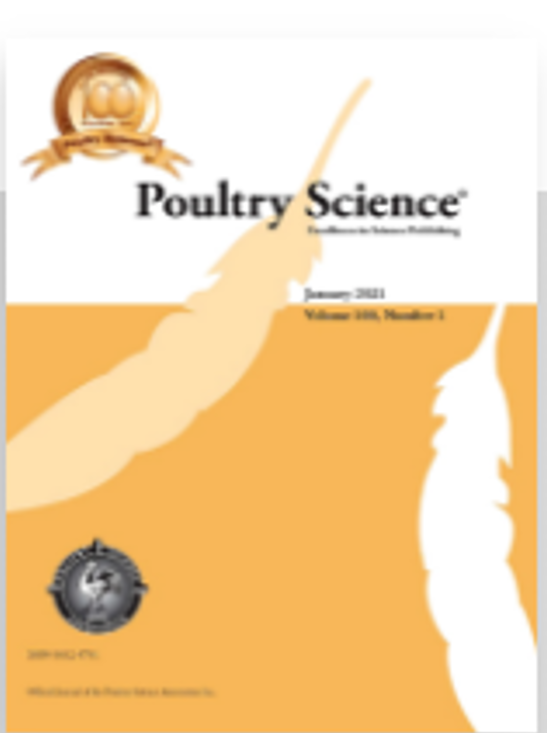Ver ítem
- xmlui.general.dspace_homeCentros Regionales y EEAsCentro Regional Buenos Aires NorteEEA PergaminoArtículos científicosxmlui.ArtifactBrowser.ItemViewer.trail
- Inicio
- Centros Regionales y EEAs
- Centro Regional Buenos Aires Norte
- EEA Pergamino
- Artículos científicos
- Ver ítem
MHC-B variation in maternal and paternal synthetic lines of the Argentinian Campero INTA chicken
Resumen
The Campero-INTA chicken of Argentina was developed to provide a robust bird that can survive under Argentinian pasture conditions with no significant additional nutrition, producing a source of animal protein for small producers or low-income families. In previous work we described the AH paternal line of Campero and its Major Histocompatibility Complex B region (MHC-B) variation. In this work we analyzed the three remaining synthetic lines used to
[ver mas...]
The Campero-INTA chicken of Argentina was developed to provide a robust bird that can survive under Argentinian pasture conditions with no significant additional nutrition, producing a source of animal protein for small producers or low-income families. In previous work we described the AH paternal line of Campero and its Major Histocompatibility Complex B region (MHC-B) variation. In this work we analyzed the three remaining synthetic lines used to produce the Campero-INTA production bird: lines AS, A and E. Because of the association between variation within the MHC of chickens and disease resistance, MHC variation within this breed is of particular interest. MHC variability within the lines used to produce the Campero-INTA chicken was examined using a 90 SNP panel encompassing the chicken MHC-B region plus the VNTR, LEI0258, located within the chicken MHC. Across all four lines 12 haplotypes were found, with 7 of these being previously reported in North America/European breeds, reflecting the original breed sources for these birds. Three Campero unique haplotypes were found, two of which likely originated from MHC recombination events. MHC-B variation for all lines involved with production of the final Campero-INTA bird have now been determined.
[Cerrar]

Autor
Iglesias, Gabriela M.;
Beker, María P.;
Remolins, Jose S.;
Canet, Zulma Edith;
Librera, José;
Cantaro, Horacio Luis;
Maizon, Daniel Omar;
Fulton, Janet E.;
Fuente
Poultry Science 100 (7) : 101253. (May 2021)
Fecha
2021-05
Editorial
Elsevier
ISSN
0032-5791
Formato
pdf
Tipo de documento
artículo
Palabras Claves
Derechos de acceso
Abierto
 Excepto donde se diga explicitamente, este item se publica bajo la siguiente descripción: Creative Commons Attribution-NonCommercial-ShareAlike 2.5 Unported (CC BY-NC-SA 2.5)
Excepto donde se diga explicitamente, este item se publica bajo la siguiente descripción: Creative Commons Attribution-NonCommercial-ShareAlike 2.5 Unported (CC BY-NC-SA 2.5)


